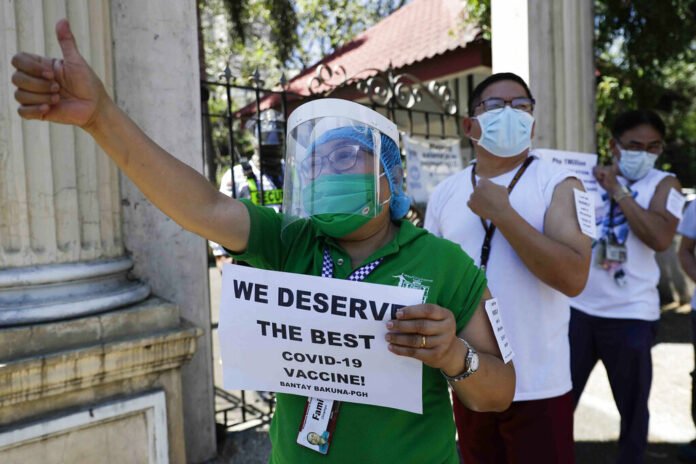
GOVERNMENT spending that is not directed toward boosting the country’s health capacity may do more harm than good, according to an economist from the University of the Philippines.
UP School of Economics Professor Toby Melissa C. Monsod said the government should concentrate on boosting the country’s health capacity.
Based on the findings of her recent study, the lockdowns were not the reason for the contraction of economic growth last year but the country’s lack of capacity to detect and respond to the pandemic, Monsod pointed out.
“If Covid-19 is not first well-contained, then government spending aimed at other things may not matter for economic recovery and could even make things worse,” Monsod said in her opening remarks at the “Covid-19 in the Philippines: What are the Scenarios for the Next 12 Months?
“The implication is clear. Health system capacity must be prioritized over and above other types of spending including Build, Build, Build spending,” she added.
Monsod said, however, that the 2021 budget does not reflect this priority since the budget of the Department of Health (DOH) was reduced. This, while the infrastructure budgets for the Department of Public Works and Highways (DPWH) and Department of Transportation (DOTr) were increased.
Investing in health capacity should be a priority moving forward since, Monsod said, the lack of investments in this sector 20 years ago, could have saved the country billions.
Based on her research, Monsod said, if the government in the 2000s only invested in laboratories, economic growth would not have plunged to 9.6 percent last year.
P700B could have been saved
“Better prepared laboratory systems, coming into the crisis, could have saved up to 3.6 percentage points in lost GDP growth forecasted in 2020. What does this mean? This is equivalent to about P700 billion,” Monsod said.
“So if we had just done our homework, when everyone was doing that homework in the early 2000s, and if we had listened to our own experts that we had to be better prepared for emerging outbreaks, perhaps we would not have suffered such a contraction in the economy,” she added.
The lack of capacity is reflected not only in the number of Covid-19 cases nationwide but also in other indicators.
Face shields
Epidemiologist John Q. Wong said in the same webinar that the country still has poor compliance with wearing face shields, making more people in danger of contracting the disease.
With this, Wong said the combined effectiveness of face coverings is only 69 percent in the Philippines. Ideally, it should be 80 percent.
In terms of testing, Wong said the country is only able to test 1 in 5 of people who need to be tested. The current positivity rate of the country is 20 percent.
This means in order to achieve a 5 percent positivity rate—recommended by the World Health Organization (WHO) which signifies that the outbreak is under control —the country needs to do 200,000 tests per day.
“If we can find them, we can isolate and quarantine them,” Wong said.
Monsod also lamented that apart from the lack of health capacity, with meager resources, the government could not even spare funds for Filipinos who will not be able to work, especially during the Enhanced Community Quarantine (ECQ).
On Sunday, the Inter-Agency Task Force on Emerging Infectious Diseases (IATF-EID) placed the National Capital Region (NCR), epicenter of the pandemic, under Modified Enhanced Community Quarantine (MECQ) which is less stringent as it allows greater mobility among citizens compared to the ECQ.
“What is our challenge today? We need to convince officials and stakeholders who are concerned for the economy and for economic recovery to focus on capacitating public health systems so that we can get out of this hole. This is a big ask because they’re not just accustomed to thinking in that way,” Monsod said.
On Thursday, the DOH explained that the P9-billion funds for the construction of health infrastructure under the Bayanihan I and II were spent, emphasizing that the funds were utilized to construct temporary medical isolation and quarantine facilities, field hospitals, dormitories, and expand government hospital capacities through the procurement of various medical equipment.
Of the P4.5 billion provided under Bayanihan II, P3.88 billion has been utilized as of December 31, 2020 for the construction of temporary medical isolation and quarantine facilities, field hospitals, dormitories for frontliners and expansion of government capacity all over the country.
On the other hand, the DOH said, of the remaining P617 million, P308 million has been utilized to procure essential Covid-related equipment such as mechanical ventilators, portable X-ray machines, hemodialysis machines, high flow nasal cannula oxygen machines, and other equipment necessary for increasing laboratories’ testing capacities.
Read full article on BusinessMirror
